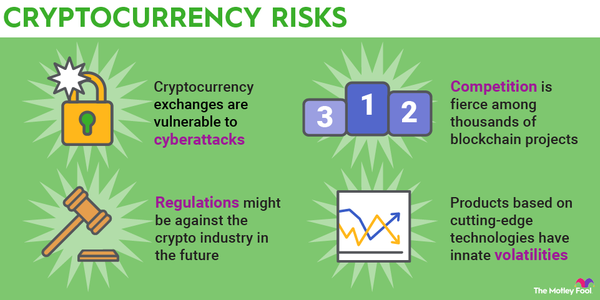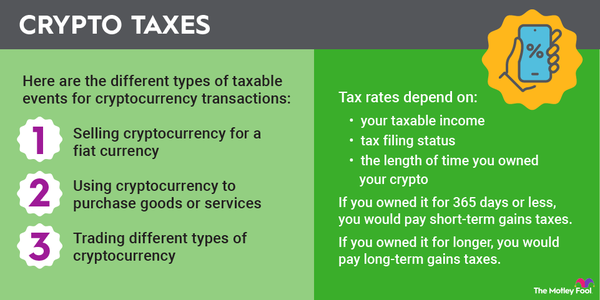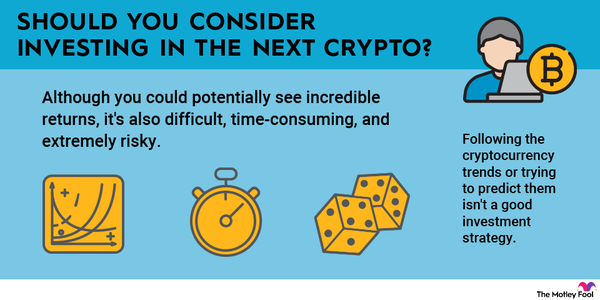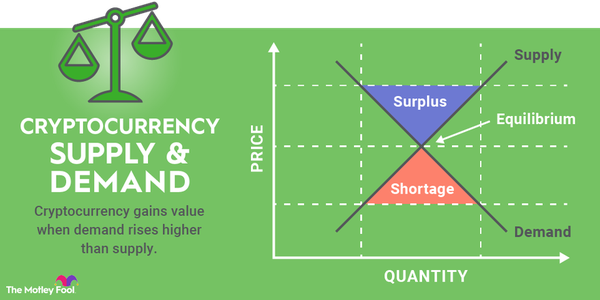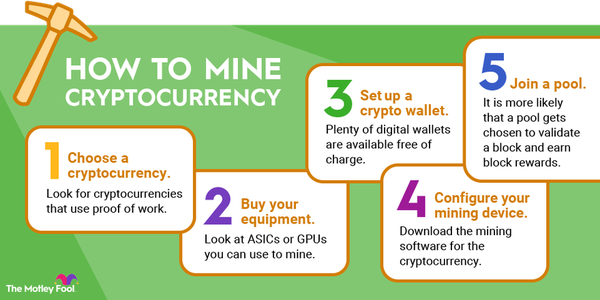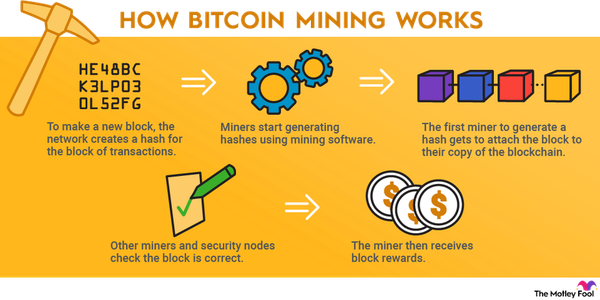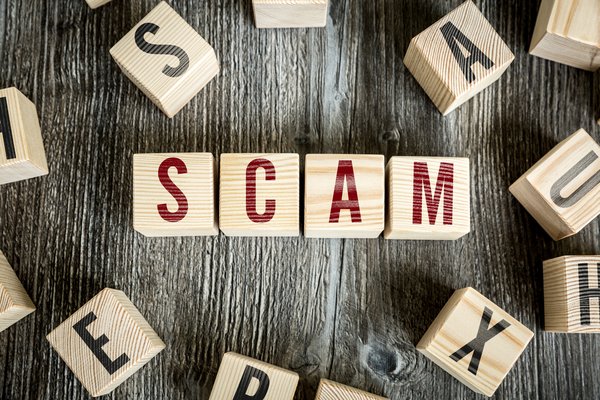Just about everyone has heard of cryptocurrency by now, but most people still don't really understand it. More than just a form of digital cash, cryptocurrency and the underlying technology have the potential to transform the financial sector and many other industries. It's worth taking your time to learn a bit about cryptocurrency.
What is it?
What is cryptocurrency?
Cryptocurrency is a digital currency that doesn't rely on central banks or trusted third parties to verify transactions and create new currency units. Instead, it uses cryptography to confirm transactions on a publicly distributed ledger called a blockchain.
That definition might seem downright cryptic right now. But by the end of this overview, you won't need a decryption key to understand crypto.
There are thousands of different cryptocurrencies in circulation, each with varying values. The first cryptocurrency, Bitcoin (CRYPTO:BTC), was developed in 2009 by a programmer using the pseudonym Satoshi Nakamoto.
In a 2008 white paper, "A Peer-to-Peer Electronic Cash System," Nakamoto provides the first description of blockchain. Blockchain is the technology that enables cryptocurrency to work like government-issued (fiat) currencies but without the involvement of any central bank or trusted third party.
Specifically, blockchain solves the "double-spending problem" associated with digital cash. Since digital information is easily copied, digital money requires a mechanism that reliably prevents a currency unit from being "duplicated" or otherwise spent more than once.
The global financial system, as a collective entity, has historically been responsible for establishing and ensuring the legitimacy of monetary transactions.
The validity of cryptocurrency is established and maintained without any involvement by the world's central banks. Instead, ledgers of cryptocurrency transactions are publicly maintained. Transactions verified by blockchain technology are immutable, meaning they cannot be changed. That prevents hackers from producing fraudulent transaction records and establishes trust among users.
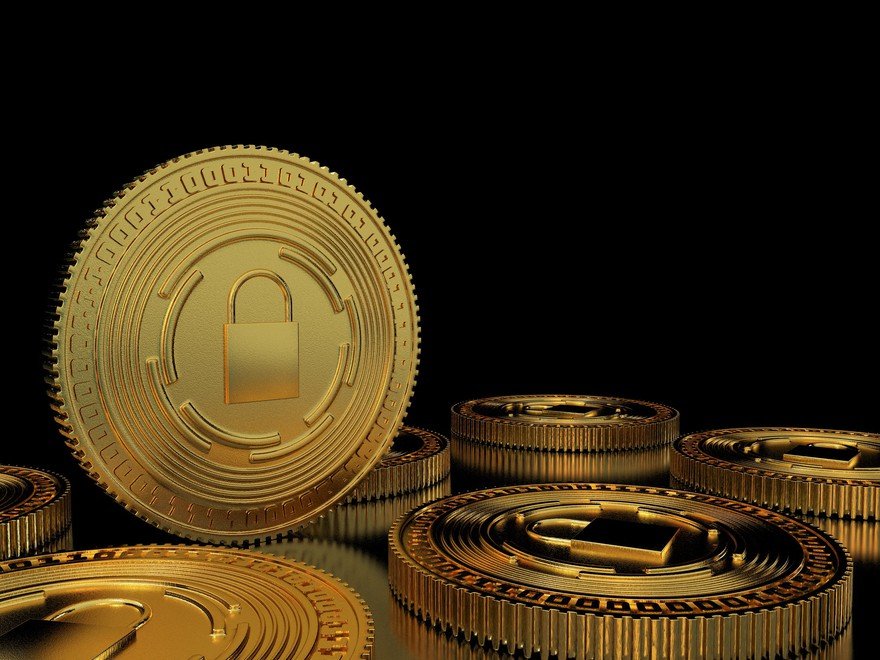
How many exist?
How many cryptocurrencies are there?
There are thousands of cryptocurrencies available and thousands more that are now defunct. According to CoinMarketCap, there were 10,032 cryptocurrencies as of mid-2024. New tokens are constantly coming to market.
There are so many cryptocurrencies because it's extremely easy to create one. Ethereum's (CRYPTO:ETH) blockchain allows users to write bits of code to the blockchain, essentially letting anyone launch a new token that uses the Ethereum network. So, instead of having to build the whole thing from scratch, developers can just use the pre-existing infrastructure.
There are many other blockchains that have put their own spins on Ethereum's innovation. For instance, Binance Smart Chain is supported by Binance, the largest cryptocurrency exchange in the world.
How it works
How cryptocurrency works
To make a cryptocurrency transaction, you need a wallet for that digital currency. A cryptocurrency wallet doesn't actually hold any currency; it merely provides an address for your funds on the blockchain. A cryptocurrency wallet also includes private and public keys that enable you to complete secure transactions.
You can buy or sell cryptocurrency using a cryptocurrency exchange. Exchanges, which can hold deposits in both fiat and cryptocurrencies, credit and debit the appropriate balances of buyers and sellers to complete cryptocurrency transactions. You can also use cryptocurrency to buy something, such as a product or service.
Every time you buy cryptocurrency or use it to complete a purchase, you authorize the movement of a specified amount of cryptocurrency from your wallet address to the seller's wallet address. The cryptocurrency transaction is encrypted with your private key and pushed to the blockchain.
The cryptocurrency network's miners access your public key to confirm that your private key was used to encrypt the transaction. Once the block that includes your transaction is confirmed, the ledger is updated to show the new cryptocurrency balances for both your address and the seller's. This entire process is conducted by software.
Blockchain?
Why is it called a blockchain?
A block is a collection of transaction data on a cryptocurrency network. It basically states that Person A sent X amount of the cryptocurrency to Person B, Person Y received this much cryptocurrency from Person Z, and so on.
A block includes a reference to the block that immediately precedes it. The blocks create a chain, linking one to another through references to prior blocks. To change a block in the ledger, a hacker would have to reproduce the entire chain of blocks following it since not doing so would create a chain of invalid references that the cryptocurrency network would not accept.

Blocks include additional information that further enables the cryptocurrency network to verify their validity. The proof-of-work method of establishing distributed consensus relies on cryptocurrency miners using large amounts of computing power to add blocks to the blockchain.
The computing power solves complex puzzles, such as math problems, for which solutions are easily verified as correct. The miners are typically rewarded with cryptocurrency and transaction fees.
New blocks cannot be added to the blockchain without a miner computing a valid solution to the block's puzzle. With every transaction, the blockchain grows longer, and the computing power required to add a new block increases.
By design, the blockchain becomes increasingly tamper-proof; a hacker today would need computing power equivalent to the majority of the computing power on the cryptocurrency network to successfully alter transactions.
Another method of establishing distributed consensus to add to a blockchain is known as proof of stake. Instead of requiring vast amounts of computing power, the proof-of-stake method enables the cryptocurrency holders with the most wealth or the oldest stakes to create blocks by verifying transactions.
Stakeholders are selected semi-randomly. Additional mechanisms are in place to prevent the wealthiest individuals from creating fake transactions or otherwise exerting too much power over the blockchain.
Popularity
Why is crypto so popular?
- Increasing utility. New uses for cryptocurrency and blockchain technology are developing all the time. From new decentralized finance (DeFi) apps to blockchain games to non-fungible tokens (NFTs), the industry is constantly evolving. Additionally, more retailers and service providers are accepting cryptocurrency as payment.
- Attractive investment. The value of cryptocurrency as an asset class has skyrocketed over the past 10 years. In that time, it's shifted from being a niche topic to receiving lots of buzz in the mainstream media. Many see it as an attractive asset class that can produce outsize returns.
- Futurism. Many people believe cryptocurrency is the future of money. Indeed, many businesses across various industries are developing ways to use blockchain technology to improve operations. We could still be in the very early days of cryptocurrency.
The biggest
Biggest cryptocurrencies
These are the five largest cryptocurrencies:
| Rank | Coin Name | Market Cap |
|---|---|---|
| 1 | Bitcoin (CRYPTO:BTC) | $1.124 trillion |
| 2 | Ethereum (CRYPTO:ETH) | $305 billion |
| 3 | Tether (CRYPTO:USDT) | $116 billion |
| 4 | Binance Coin (CRYPTO:BNB) | $74 billion |
| 5 | Solana (CRYPTO:SOL) | $65 billion |
The list of the most valuable cryptocurrencies is always changing, just like the list of the most valuable publicly traded companies. However, since cryptocurrencies tend to be more volatile than blue chip stocks, how cryptocurrencies rank in value can change quickly. There are a few consistencies at the top of the list, though.
Bitcoin is by far the most valuable cryptocurrency. As the original cryptocurrency, it has the strongest adoption rate and a large network of miners, ensuring it remains at the top of this list.
Ethereum's Ether is consistently the second-largest cryptocurrency. Ethereum serves as a platform for other cryptocurrencies besides Ether, and offering decentralized applications to other token creators ensures that Ether consistently retains greater value than those other tokens. Most cryptocurrencies rely on the decentralized applications provided by Ethereum.

The best
Best cryptocurrencies
Bitcoin and Ether stand out among all the others. Buying Bitcoin is an obvious choice for anyone interested in cryptocurrency. It's widely supported, and a well-established ecosystem of software is available to facilitate transactions.
Ether is attractive because the Ethereum blockchain is valuable for establishing new tokens, DeFi services, NFTs, and other blockchain applications.
Pros & cons
Advantages and disadvantages of cryptocurrency
Using cryptocurrency has several big advantages over traditional finance. They are:
- Speed. A cryptocurrency transaction can take as little as a few minutes to confirm. Once confirmed, the receiving party can spend the funds however they see fit. In traditional finance, it takes at least a day for a transfer to clear.
- Lower fees. In many cases, the cost of using cryptocurrency is substantially lower than using traditional financial institutions. For example, there's no fee for storing cryptocurrency; many banks charge a monthly fee. The cost of sending money to someone internationally is extremely low compared to traditional international remittance services.
- No barriers to entry. Unlike traditional finance, there's no need to have a valid ID or go into a bank to use Bitcoin. There's no credit check. There's no know-your-customer information you need to provide. That can be extremely attractive for the millions of unbanked people worldwide.
- Security. Cryptocurrency is much more secure than holding cash or using a debit card for internet transactions. A hacker would need your private key to steal the Bitcoin held in your wallet. It's also worth noting that cryptocurrency transactions are generally anonymous.
There are also some disadvantages to holding cryptocurrency. They include:
- No insurance. There's no insurance on funds held in cryptocurrency. Funds deposited in a bank account in the U.S. are typically insured through the Federal Deposit Insurance Corp. (FDIC). If the bank loses your money, you're covered for as much as $250,000 per account holder. There's not necessarily any recourse if you or your custodian loses your cryptocurrency.
- No way to dispute transactions. If you accidentally send too much to someone or don't receive what you were supposed to in exchange, there's no way to dispute or reverse a transaction. All transactions confirmed on the blockchain are finalized. The only way to get your money back is if the other party agrees to send it to you.
- Easy to lose access to funds. If you lose your private key, you no longer have access to your funds. The private key is necessary to sign transactions and write them to the blockchain. Make sure you back up your private key in multiple places.
- High volatility. The values of many cryptocurrencies are extremely volatile. This can make them difficult to use as a means of paying for goods and services since retail prices would need to fluctuate to adjust for the currency's volatility. It can also make it difficult to stomach as an investor when the price can easily swing more than 10% on any given day.
Mining
How to mine cryptocurrency
Mining cryptocurrency is the process of using your computing power to verify transactions on the blockchain. When you verify a block, you receive a reward and collect some fees from the transacting parties.
To start mining cryptocurrency, you'll need a computer you can dedicate to the process. You'll need a computer with energy-efficient processors to make sure you don't spend more on electricity than you earn from mining.
There are really only two viable processor options for mining most cryptocurrencies: graphics processing units (GPUs) or application-specific integrated circuits (ASICs). A GPU is typically found in gaming PCs or high-end PCs used for graphics rendering. An ASIC is a chip designed specifically for one task -- mining a certain cryptocurrency.
The advantage of ASICs is that they're far more efficient. The disadvantages are that they're much less flexible regarding what you can mine using them and are more expensive than GPUs.
Once you have the hardware, it's just a matter of setting up a cryptocurrency wallet and some mining software. Be sure to store your mining computer in a cool, well-ventilated part of your house since it will generate a lot of heat. And make sure you keep it connected to the internet to mine all day.
Once everything is set up, it's a pretty hands-off process. However, you need to monitor the cryptocurrencies you mine. A sharp drop in price could make the operation unprofitable.
Related crypto topics
Are cryptocurrencies a good investment?
Cryptocurrencies are not simply "good" or "bad" as investments. Cryptocurrencies may fit well in a diversified portfolio of assets, but putting most or all of your money into an asset class as volatile as cryptocurrency is unlikely to serve your portfolio well.
The newness of cryptocurrencies makes their risks not easily understood, which translates into a poor understanding of how cryptocurrency values correlate with the values of other assets. Not enough historical data exists to confidently predict how the prices of cryptocurrencies fluctuate when the prices of other assets change.
This lack of visibility can make it difficult to establish a balanced portfolio that maximizes returns without exceeding your desired level of risk.
Lack of historical data notwithstanding, many investors -- including institutional investors, banks, and company CEOs -- assert that cryptocurrency should be part of everyone's portfolio. Understanding cryptocurrency, how it works, and the value it can provide over fiat currency is an important first step to investing money in cryptocurrency.
Adam Levy has positions in Bitcoin and Ethereum. The Motley Fool has positions in and recommends Bitcoin, Ethereum, and Solana. The Motley Fool has a disclosure policy.




















